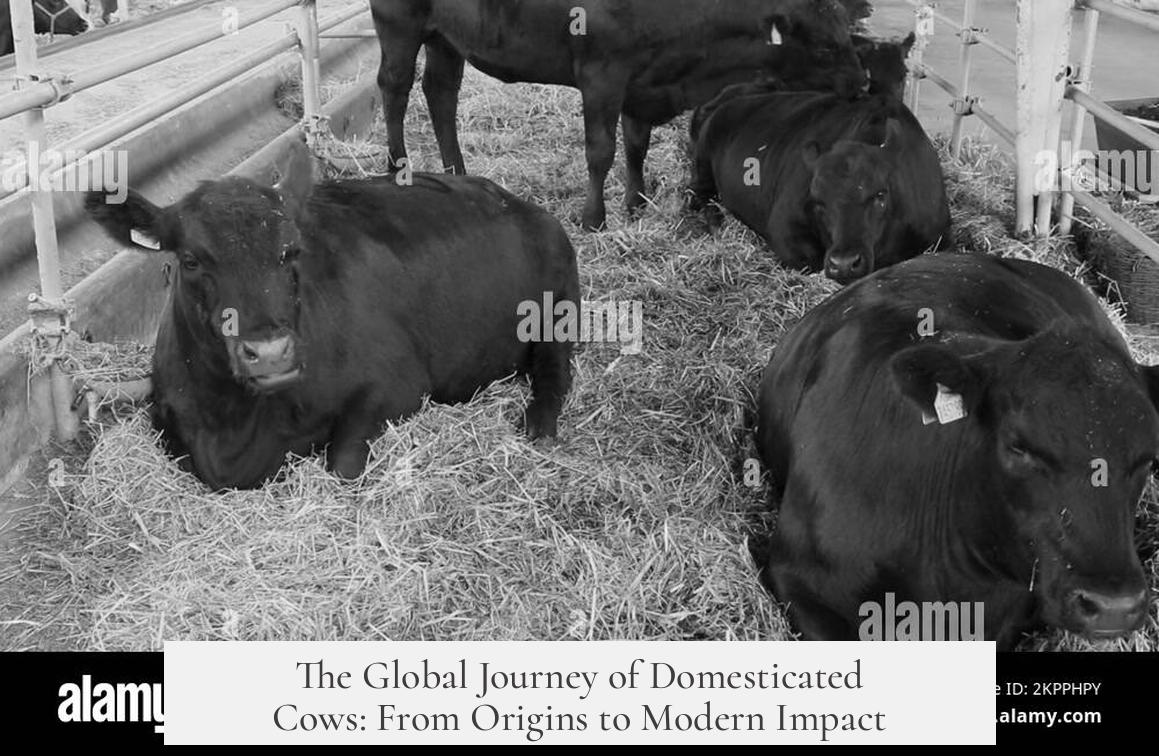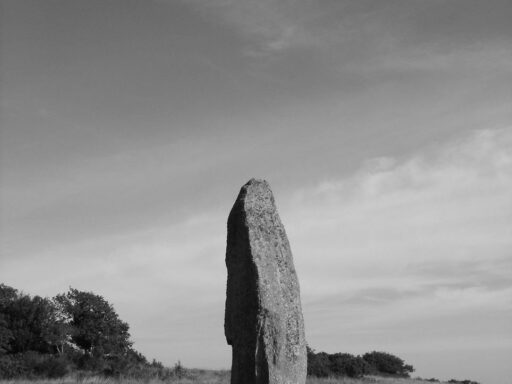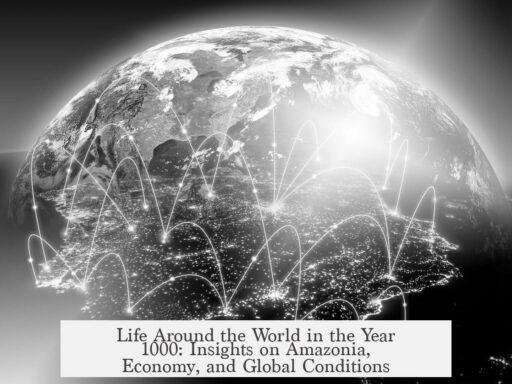The domesticated cow spread globally through gradual migration and human settlement beginning around 10,000 years ago. Domestication first occurred independently in southern Turkey and the Indian subcontinent. Two main species emerged: Bos taurus in Turkey and Bos indicus in India. These species share a distant ancestor, the auroch, from about 200,000 years ago but diverged enough to become distinct.
The Bos taurus cattle originating from Turkey spread westward into Europe and later to other parts of the world. By about 8,500 years ago, domesticated taurine cattle appear in European Turkey. Their spread coincided with early agricultural societies moving throughout Europe. Europeans later transported taurine cattle to North America and Australia during colonization. Even East Asian countries like China and Japan, historically not cattle-herding, have recently imported European taurine cattle.
Meanwhile, Bos indicus cattle spread from the Indian subcontinent throughout South Asia. Remarkably, indicine cattle dominate regions like South America’s beef-producing countries—Argentina, Brazil, and Chile—due to their adaptability to harsh climates. European-introduced cattle in these areas often hybridize with indicine types to leverage drought resistance and hardiness.
Africa presents a unique case with ancient cattle herding traditions. Genetic evidence shows an east-west gradient from indicine to taurine cattle, alongside a north-south reverse pattern. South African cattle tend to have more taurine influence owing to European colonial settlements by the British and Dutch.
Today, most cattle breeds worldwide exhibit hybrid genetics, blending taurine and indicine traits. European cattle more closely resemble pure taurine breeds, while Indian cattle retain indicine dominance. African cattle often carry intermediate genetic signatures. This hybridization supports varying environmental adaptations and uses.
The initial primary use of cattle was for meat rather than milk. Widespread milk consumption and dairying practices developed much later. For example, many Central European populations remained lactose intolerant even 4,000 years ago, indicating milk use followed meat consumption. Subsequent selective breeding enhanced milk production only after dairy became culturally significant.
- Cattle domestication arose about 10,000 years ago in southern Turkey (Bos taurus) and India (Bos indicus).
- Taurine cattle spread into Europe, the Americas, and Australia via human migration and colonization.
- Indicine cattle remained dominant in South Asia and adapted well to harsh climates in South America.
- Africa’s cattle genetics show a mix of taurine and indicine influences shaped by geography and colonial history.
- Modern cattle are largely hybrids, combining traits from both domesticated species.
- Meat consumption preceded dairying; lactose intolerance delayed widespread milk use.
How and When Did the Domesticated Cow Spread Throughout the World?
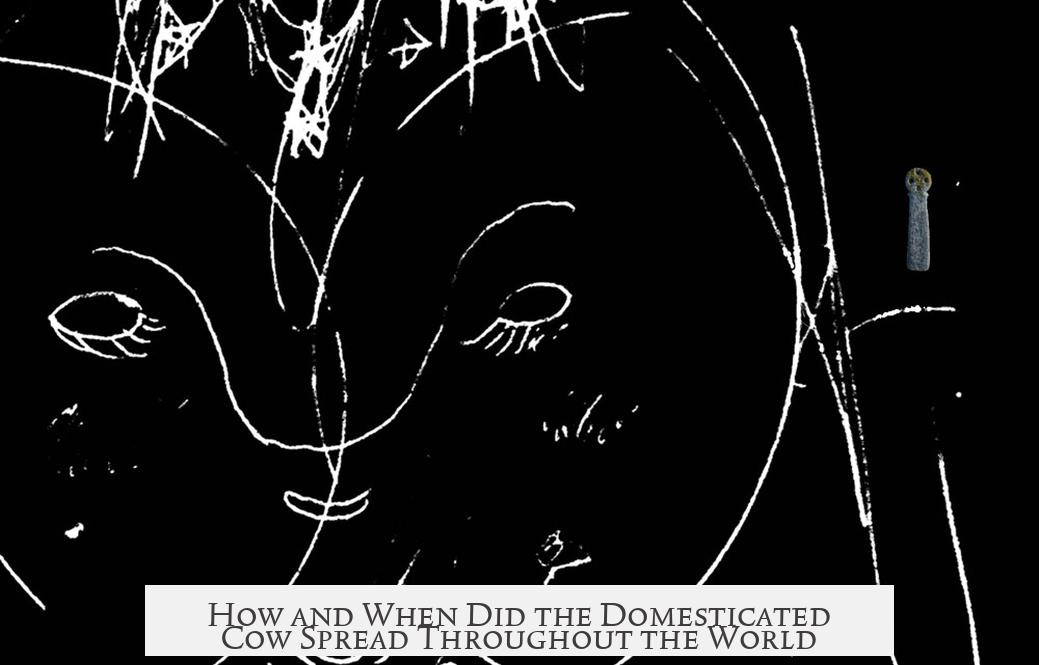
The domesticated cow began its world tour around 10,000 years ago, spreading in two main waves from distinct cradles of civilization. These two waves gave rise to the two major cattle species we know today: Bos taurus (taurine cattle) from western Eurasia, and Bos indicus (indicine cattle) from the Indian subcontinent. But how exactly did these bovine sociopaths conquer the globe? Let’s dive into the ancient saga of moo-vement and mingling.
Grab a seat—and maybe some popcorn—because the story of cattle domestication is nothing short of an epic migration mixed with a dash of genetic cocktail-making.
The Genesis: Two Independent Domestications
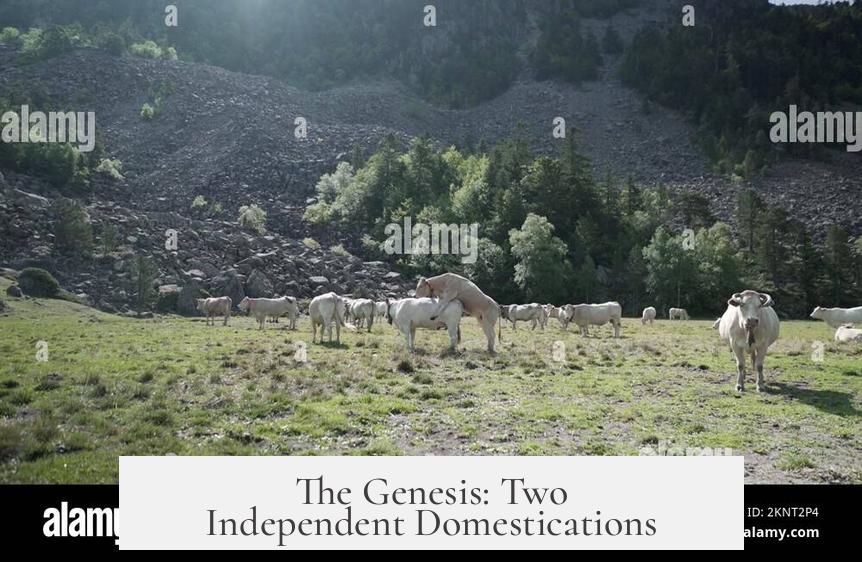
Around 8000 BC, humans in southern Turkey and northern Syria teamed up with their favorite prehistoric wild cows, the aurochs, to kick off the first domesticated herds in western Eurasia. Meanwhile, over in the Indian subcontinent, a separate domestication event was unfolding with a different branch of the auroch family tree. So, we get two bovine siblings:
- Bos taurus: The European-style, taurine cattle descended from the western auroch.
- Bos indicus: The zebu or indicine cattle of India, distinguished by their characteristic humps and genetic quirks.
These two lineages split genetically around 200,000 years ago, making them quite distinct despite their common ancestry. Think of it as the ancient bovine version of a family feud—but one that sparked evolution rather than drama.
The Spread of Taurine Cattle: From Turkey to the World
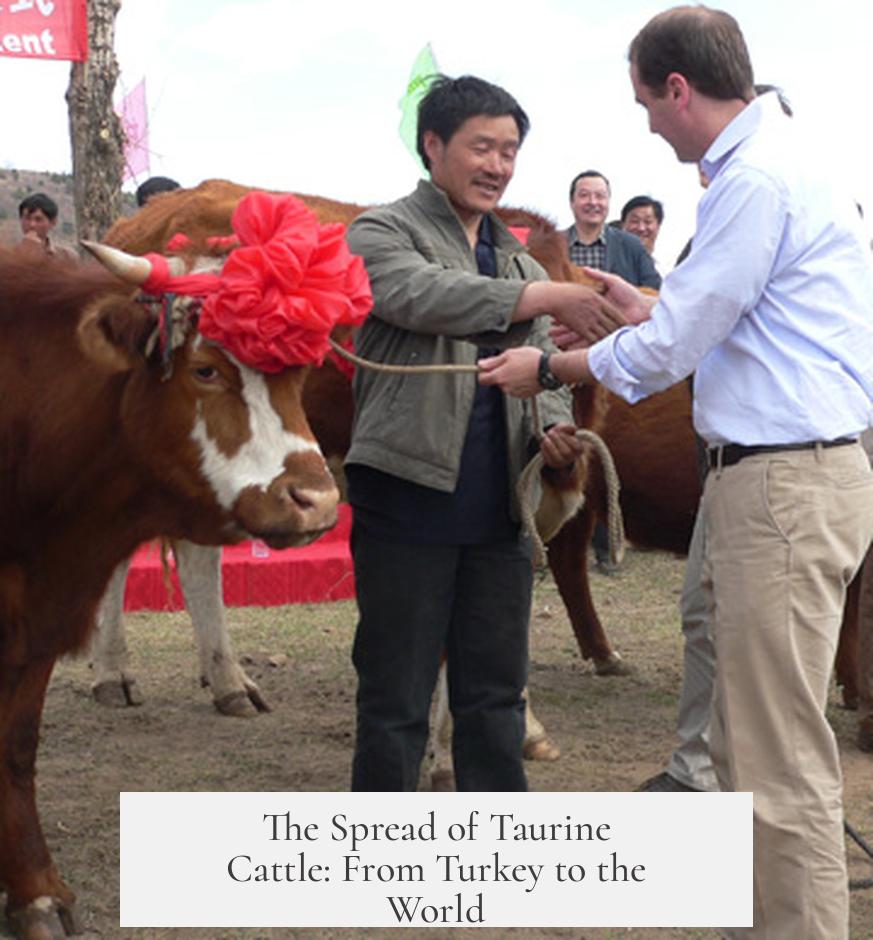
Bos taurus began their impressive journey out of southern Turkey and northern Syria. By about 8,500 years ago, domesticated taurine cattle had moved into the European part of Turkey, just before making their grand entrance into southern Europe. From there, taurine cattle embarked on a slow but steady expansion across the continent.
Fast forward thousands of years, and European colonists packed taurine cattle like prized luggage, introducing them to places like North America and Australia, where they quickly took root. These cosmopolitan cows also made a surprising leap to East Asia. China and Japan, traditionally lacking a strong history of cattle herding, imported European taurine cattle comparatively recently. So yes, even cows have a global passport!
The March of Indicine Cattle: The Indian Powerhouse
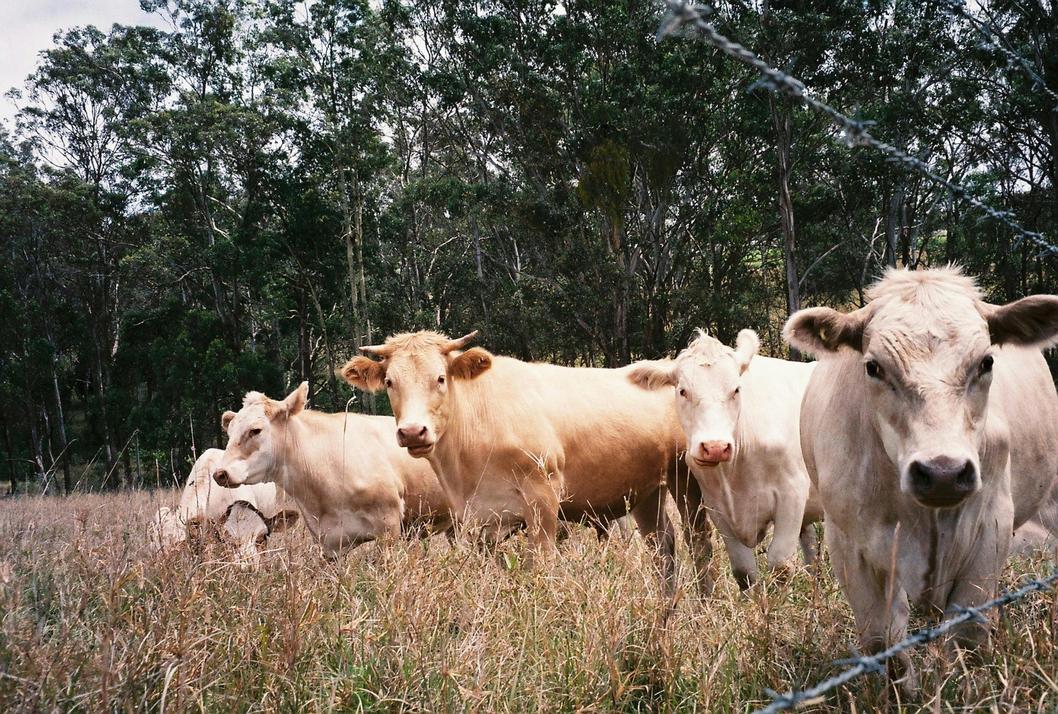
Bos indicus cattle stayed mostly loyal to their homeland and neighboring regions, becoming the backbone of the Indian subcontinent’s cattle culture. Here’s a plot twist, though: although South America had no native cattle before European arrival in the late 1400s, the beef-producing regions of Argentina, Brazil, and Chile are today dominated by indicine cattle genetics.
Why? These hardy, drought-resistant Indian cattle thrived in South America’s challenging environments better than European taurines did. The indicine’s toughness effectively gave them a starring role in South American cattle ranches. It’s like the underdog winning the championship because they brought the endurance.
Cattle in Africa: The Great Hybridizer
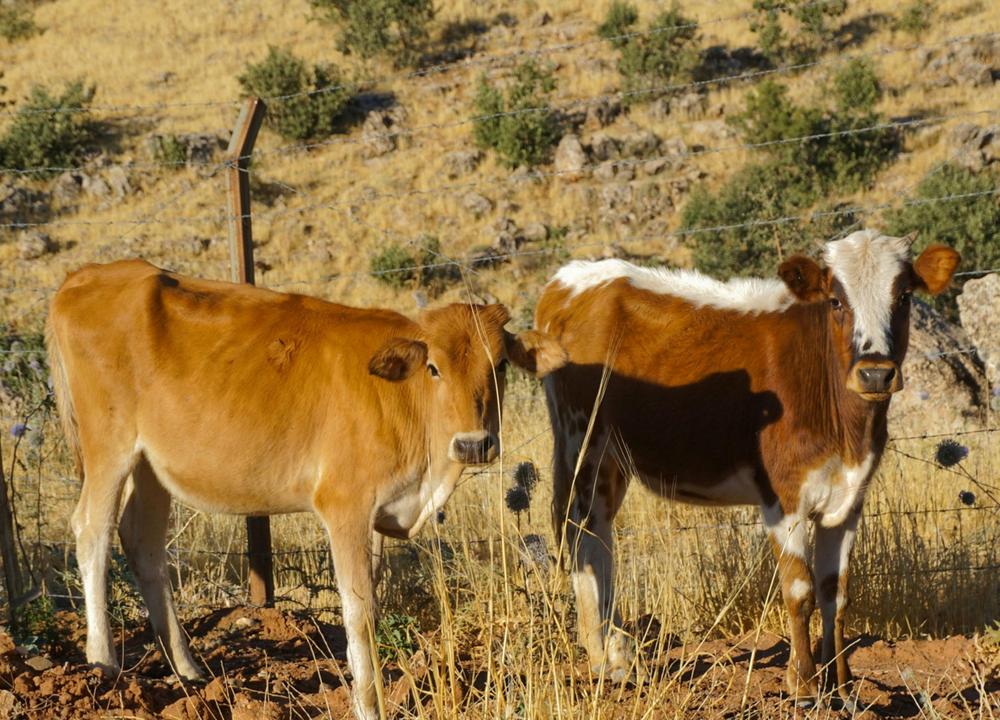
Africa’s cattle story is a blending pot. Ancient herders already had cattle thousands of years ago, but those populations aren’t “pure” taurine or indicine. Instead, they exhibit a fascinating genetic gradient:
- East-West: A shift from indicine dominance in the east to taurine influence in the west.
- North-South: A reverse trend, with taurine more dominant in southern Africa and indicine mixing in northern areas.
Except for South Africa, where the influence of British and Dutch settlers introduced more taurine genetics. This genetic blend makes African cattle uniquely adapted to diverse environments, combining traits from both ancestral lineages.
The Genetic Cocktail of Modern Cattle
Today, most cattle are hybrids to some extent. Pure taurine or indicine bloodlines are rare. European cattle mostly keep their taurine genes, Indian cattle stay largely indicine, while African cattle mingle the two. This genetic mixing isn’t just for show; it enhances adaptability and fitness for varying climates and farming needs.
What Did Early Humans Want? Meat First, Milk Much Later
It’s important to remember that the early humans didn’t just adopt cows to become cheese aficionados overnight. Meat was the primary product right after domestication. Archaeological evidence shows that milk use and dairying practices developed thousands of years later.
Consider this: regions like central Europe remained mostly lactose intolerant even 4,000 years ago, despite having cattle. People were eating the beef, not the milk. Dairy breeding, milk extraction, and tolerance to lactose in adulthood came much later and spread more slowly.
Why Does This Matter Today? Practical Lessons and Reflections
Understanding the ancient spread of domestic cattle isn’t just idle curiosity. It sheds light on agriculture, genetics, and even cultural developments:
- Breed Selection: Farmers today choose taurine or indicine breeds (or hybrids) depending on climate and purpose—milk, meat, or labor.
- Adaptation Strategies: Knowing how cattle adapted over millennia helps breeders improve disease resistance and drought tolerance.
- Historical Insight: The cattle story parallels human migrations, trade, and cultural exchanges.
So, What’s the Big Picture?
The domesticated cow took the road less traveled—actually, two roads—leading out of ancient Eurasia and India. From wild, fearsome aurochs to the familiar gentle mooers in our pastures, the story of cattle is a tale of adaptation, human innovation, and global expansion.
Now, next time you enjoy a glass of milk or a steak, remember: you’re tasting a bit of ancient history spanning continents and ten millennia of coevolution.
Ever wonder if your local cattle have a hint of that Indian drought warrior or Turkish taurine ancestor? Genetics say, probably yes—and it’s one heck of a family reunion.
When and where did cattle domestication first begin?
Cattle domestication started about 10,000 years ago. It occurred independently in southern Turkey and the Indian subcontinent. These early domestications led to two distinct cattle species.
How did taurine cattle spread beyond their origin?
Taurine cattle, from southern Turkey, spread throughout Europe by 8,500 years ago. Europeans later brought them to North America and Australia. China and Japan imported taurine cattle more recently.
Why is indicine cattle dominant in South America despite European colonization?
Indicine cattle are hardier and more drought-resistant. Even though Europeans brought cattle to the Americas, indicine breeds dominate regions like Argentina and Brazil due to these traits.
What role does hybridization play in modern cattle populations?
Most modern cattle are hybrids of taurine and indicine species. European cattle mostly carry taurine genes, Indian cattle mainly indicine genes, while African cattle show mixed ancestry from both.
When did humans begin using cattle for milk rather than just meat?
Meat use of cattle is ancient. Milk use and dairy farming came much later. Central Europe’s populations were largely lactose intolerant 4,000 years ago, so early herds were mainly for meat.

